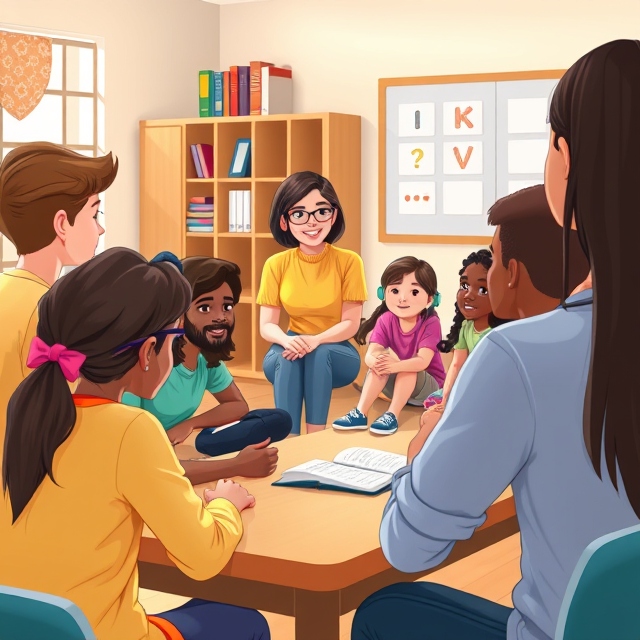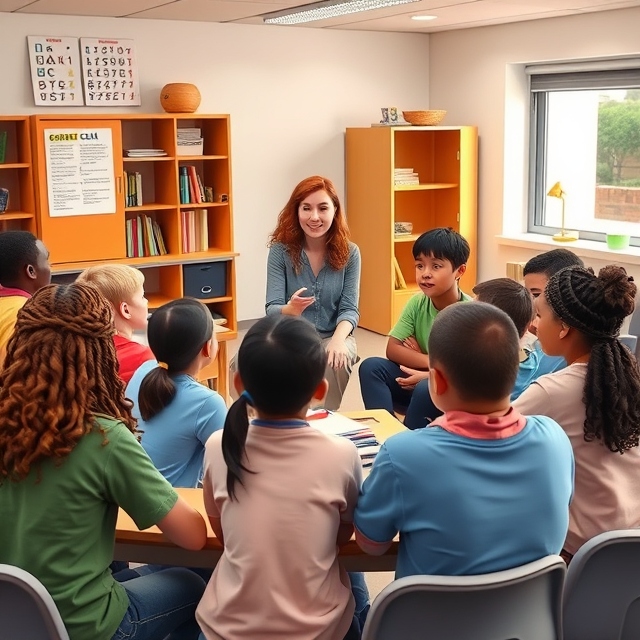Social-Emotional Learning (SEL) has become an essential part of modern education, focusing not just on academic success, but also on the emotional and social well-being of students and educators. In today’s fast-paced, often high-pressure world, SEL equips individuals with the skills to navigate emotions, build healthy relationships, and handle challenges with resilience. As mental health becomes a more prominent focus in schools, SEL offers a holistic approach to supporting both students and teachers, fostering an environment where everyone can thrive emotionally and socially.

1. What Is Social-Emotional Learning (SEL)?
SEL refers to the process through which individuals, particularly students, learn and apply the knowledge and skills necessary to manage their emotions, set positive goals, show empathy, build healthy relationships, and make responsible decisions. These skills are vital for both academic and personal success.
Key SEL Competencies Include:
- Self-Awareness: Recognizing and understanding one’s emotions and their impact.
- Self-Management: Effectively managing emotions, thoughts, and behaviors in different situations.
- Social Awareness: Understanding and empathizing with others from diverse backgrounds and cultures.
- Relationship Skills: Building and maintaining healthy relationships through communication, collaboration, and conflict resolution.
- Responsible Decision-Making: Making constructive and respectful choices in various situations.
2. The Importance of SEL for Students
a. Emotional Well-Being
- SEL helps students build emotional intelligence, which enables them to cope with stress, frustration, and disappointment.
- It also encourages self-reflection, helping students understand their emotions and reactions, which can lead to better mental health and overall well-being.
b. Improved Academic Performance
- Research shows that students with strong SEL skills tend to perform better academically. By improving emotional regulation and resilience, students can focus better in class, improve their problem-solving abilities, and manage school-related pressures more effectively.
- SEL creates a safer, more supportive classroom environment, fostering a positive atmosphere where students feel comfortable participating and learning.
c. Positive Relationships
- SEL fosters empathy and understanding, essential skills for building strong peer relationships. It helps students understand and appreciate diversity, reducing bullying and promoting inclusivity.
- Conflict resolution skills learned through SEL programs empower students to address disagreements respectfully and constructively.

3. The Importance of SEL for Educators
a. Teacher Mental Health
- Educators face significant challenges, from workload stress to managing classroom dynamics. SEL programs for teachers help them cope with stress, avoid burnout, and create positive work environments.
- By equipping educators with SEL tools, they can manage their emotions and reactions, reducing the impact of stress and enhancing their own well-being.
b. Role Modeling
- Teachers who practice SEL are better equipped to model these skills for their students. Educators’ emotional intelligence and self-management play a key role in shaping the classroom climate.
- When teachers show empathy, patience, and resilience, they create a more supportive, positive learning environment that encourages students to do the same.
c. Creating a Positive School Culture
- Teachers trained in SEL contribute to a school-wide culture of emotional well-being and respect. A school with a focus on SEL is one where students and staff feel valued and understood, creating a community where learning and personal growth are prioritized.
4. The Benefits of SEL for Communities
a. Building Resilience
- SEL helps students and educators develop resilience, the ability to bounce back from setbacks and adapt to challenges. This is especially important in today’s fast-changing world.
- Students with strong SEL skills are more likely to handle life’s challenges—such as academic pressure, family issues, or social struggles—more effectively, which supports their long-term success.
b. Reducing Behavioral Issues
- SEL programs teach students how to manage their emotions and behaviors, leading to fewer disciplinary problems. By promoting healthy emotional expression and conflict resolution, SEL reduces aggression, anxiety, and other negative behaviors in the classroom.
c. Strengthening School Communities
- SEL nurtures positive relationships not just between students, but also between students and teachers, parents, and the broader community. It creates an atmosphere of mutual respect and support, which can help build strong, cohesive school communities.

5. How to Integrate SEL into Education
a. SEL in the Curriculum
- Schools can integrate SEL into daily lessons through discussions, group activities, role-playing, and mindfulness practices.
- It can be incorporated into various subjects, from literature (discussing characters’ emotions) to science (exploring emotional and behavioral aspects of human development).
b. Professional Development for Educators
- Teachers and school staff need ongoing training and resources to successfully implement SEL. This includes providing emotional support, modeling positive behaviors, and recognizing when students need additional assistance.
- Schools can host workshops, peer support groups, and mindfulness training to promote SEL among educators.
c. Creating a Supportive Environment
- Schools should foster a supportive environment that encourages open communication and emotional expression. Providing access to counseling services, mental health resources, and peer support groups can help students and educators alike.
- Implementing SEL programs school-wide ensures that the entire school community is on board and committed to prioritizing mental and emotional health.
6. The Future of SEL in Education
As awareness around the importance of mental health continues to grow, SEL is likely to become even more integrated into school systems globally. The future will likely see more advanced SEL curricula, including digital tools and platforms to track emotional well-being and provide personalized SEL programs. The focus will be on creating a balanced, supportive learning environment that promotes mental health as an essential part of education.
Conclusion: Prioritizing Mental Health in Education
Social-Emotional Learning is not just a passing trend; it is an essential framework for creating healthier, more inclusive learning environments. By focusing on both student and educator well-being, SEL promotes emotional intelligence, positive relationships, and resilience, ultimately leading to stronger academic and personal growth. As we move forward, embedding SEL into the fabric of education will ensure that all individuals have the tools they need to succeed emotionally, socially, and academically.






